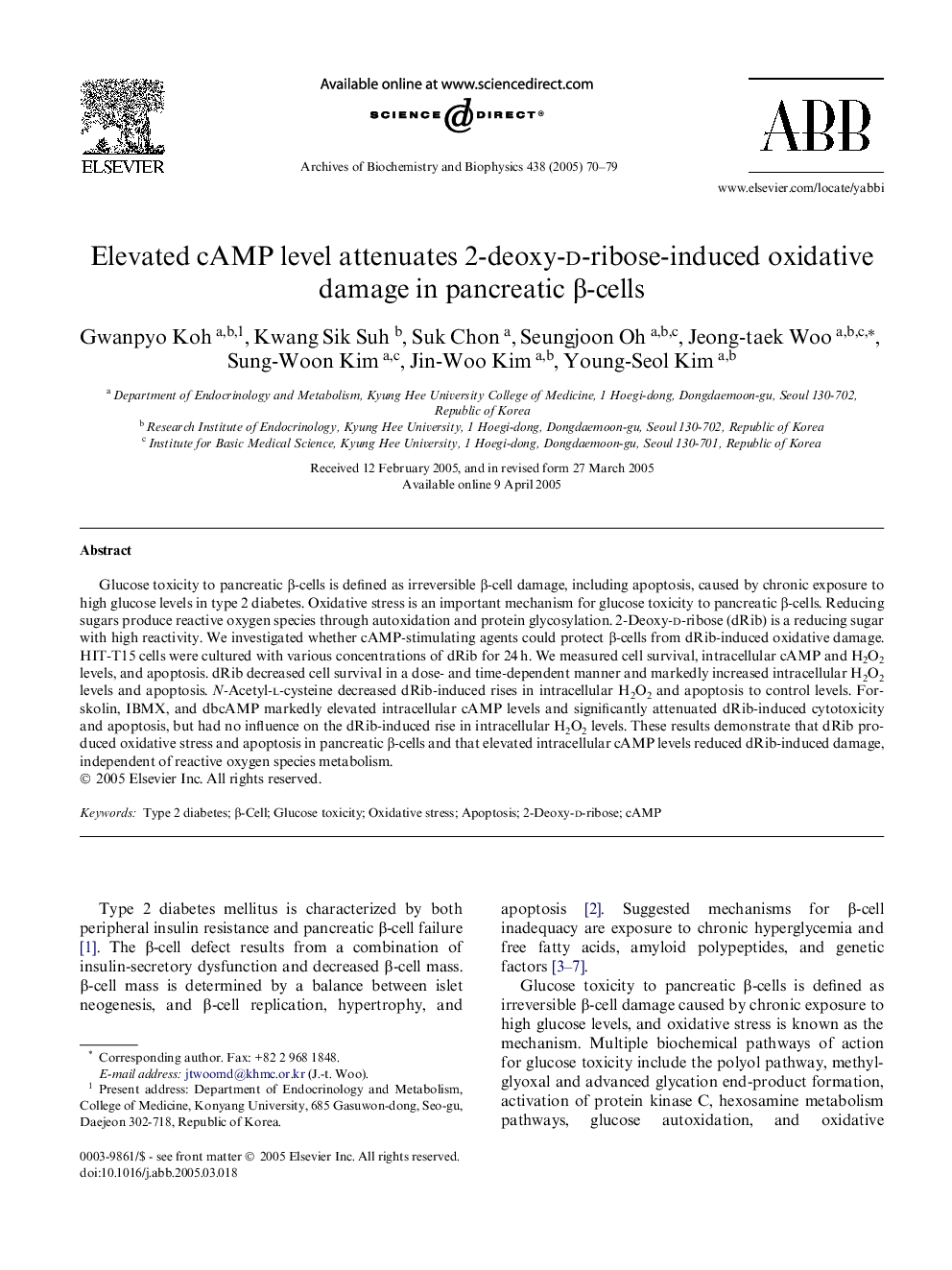| Article ID | Journal | Published Year | Pages | File Type |
|---|---|---|---|---|
| 9882207 | Archives of Biochemistry and Biophysics | 2005 | 10 Pages |
Abstract
Glucose toxicity to pancreatic β-cells is defined as irreversible β-cell damage, including apoptosis, caused by chronic exposure to high glucose levels in type 2 diabetes. Oxidative stress is an important mechanism for glucose toxicity to pancreatic β-cells. Reducing sugars produce reactive oxygen species through autoxidation and protein glycosylation. 2-Deoxy-d-ribose (dRib) is a reducing sugar with high reactivity. We investigated whether cAMP-stimulating agents could protect β-cells from dRib-induced oxidative damage. HIT-T15 cells were cultured with various concentrations of dRib for 24 h. We measured cell survival, intracellular cAMP and H2O2 levels, and apoptosis. dRib decreased cell survival in a dose- and time-dependent manner and markedly increased intracellular H2O2 levels and apoptosis. N-Acetyl-l-cysteine decreased dRib-induced rises in intracellular H2O2 and apoptosis to control levels. Forskolin, IBMX, and dbcAMP markedly elevated intracellular cAMP levels and significantly attenuated dRib-induced cytotoxicity and apoptosis, but had no influence on the dRib-induced rise in intracellular H2O2 levels. These results demonstrate that dRib produced oxidative stress and apoptosis in pancreatic β-cells and that elevated intracellular cAMP levels reduced dRib-induced damage, independent of reactive oxygen species metabolism.
Related Topics
Life Sciences
Biochemistry, Genetics and Molecular Biology
Biochemistry
Authors
Gwanpyo Koh, Kwang Sik Suh, Suk Chon, Seungjoon Oh, Jeong-taek Woo, Sung-Woon Kim, Jin-Woo Kim, Young-Seol Kim,
